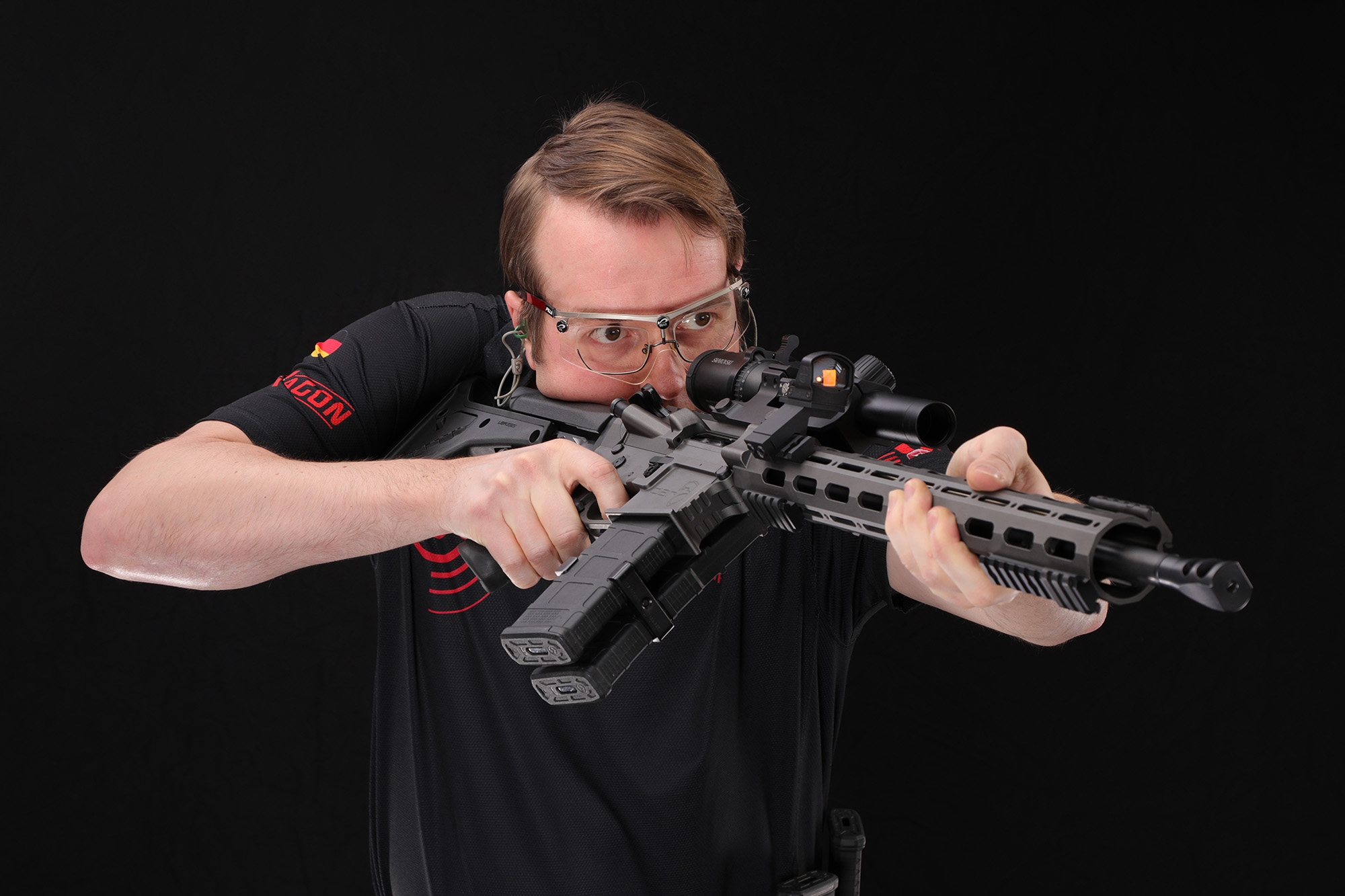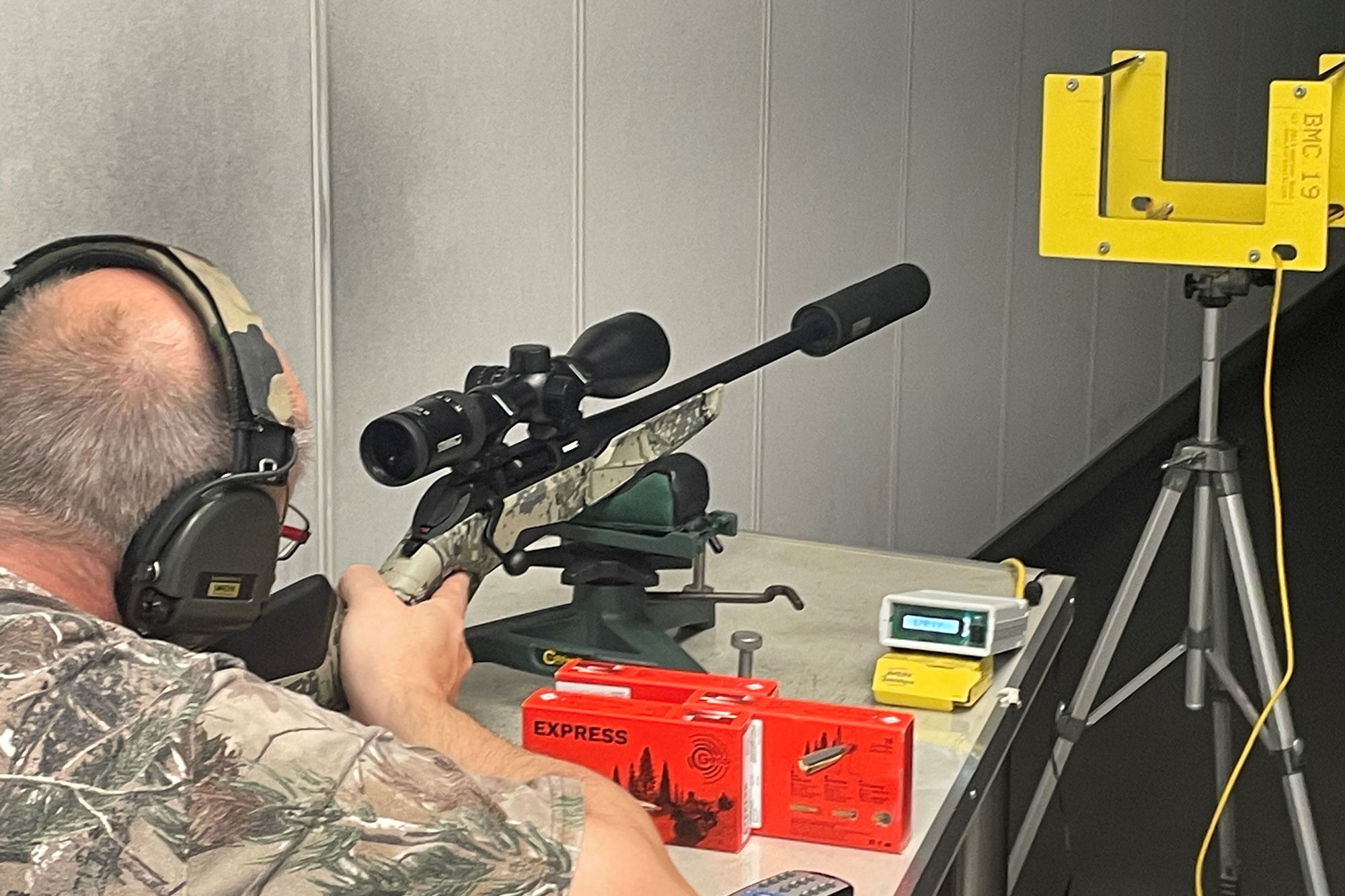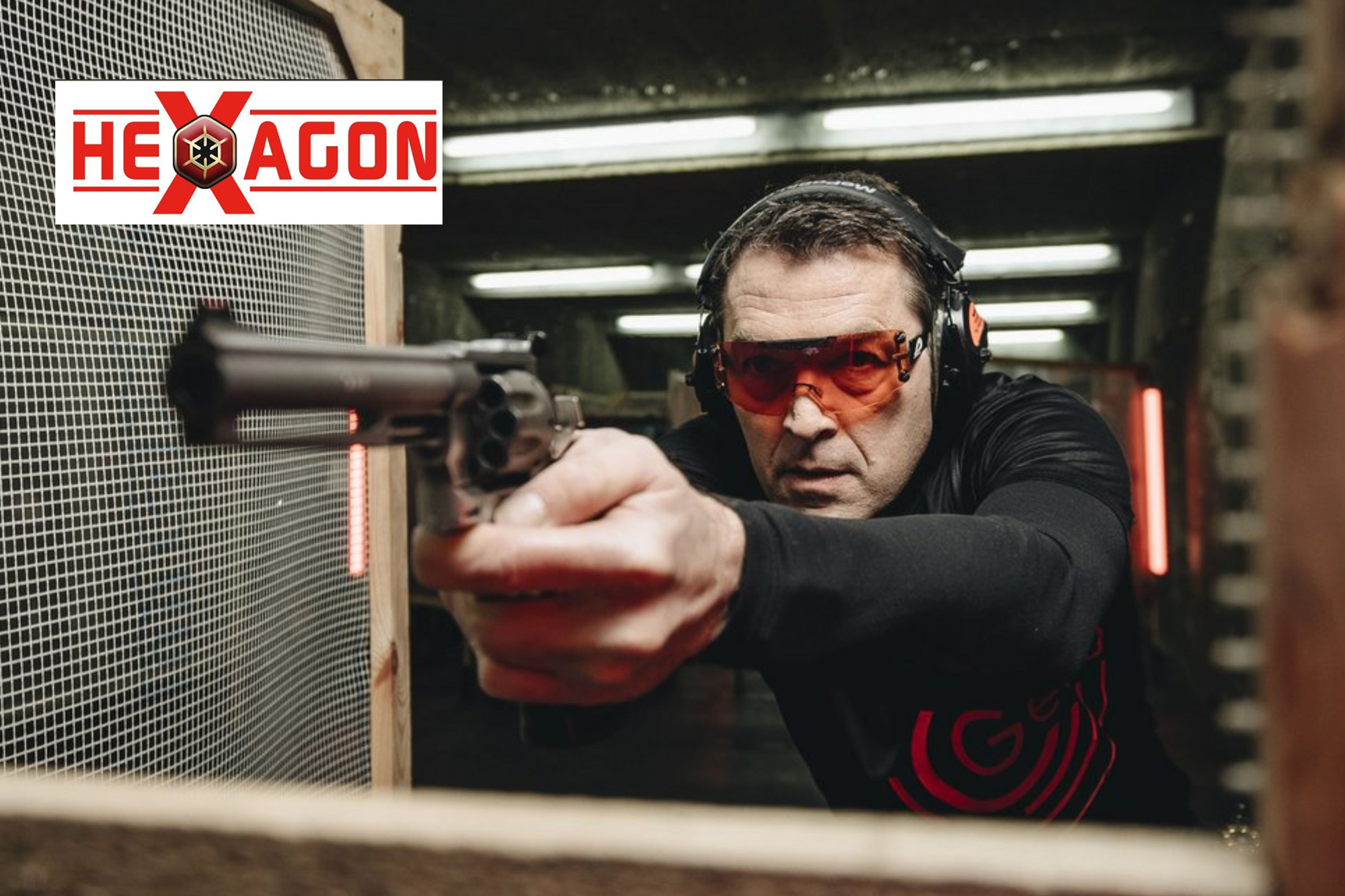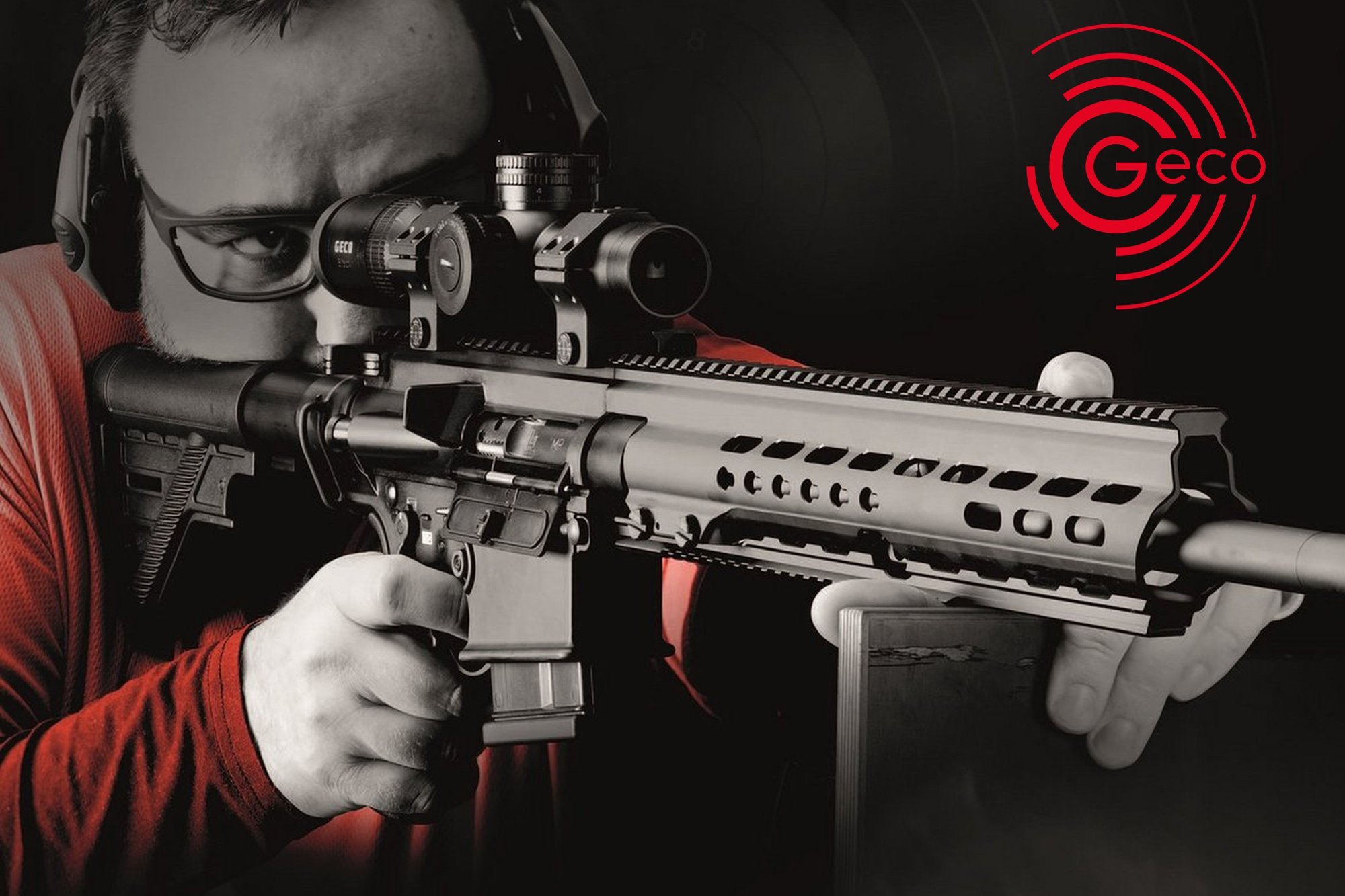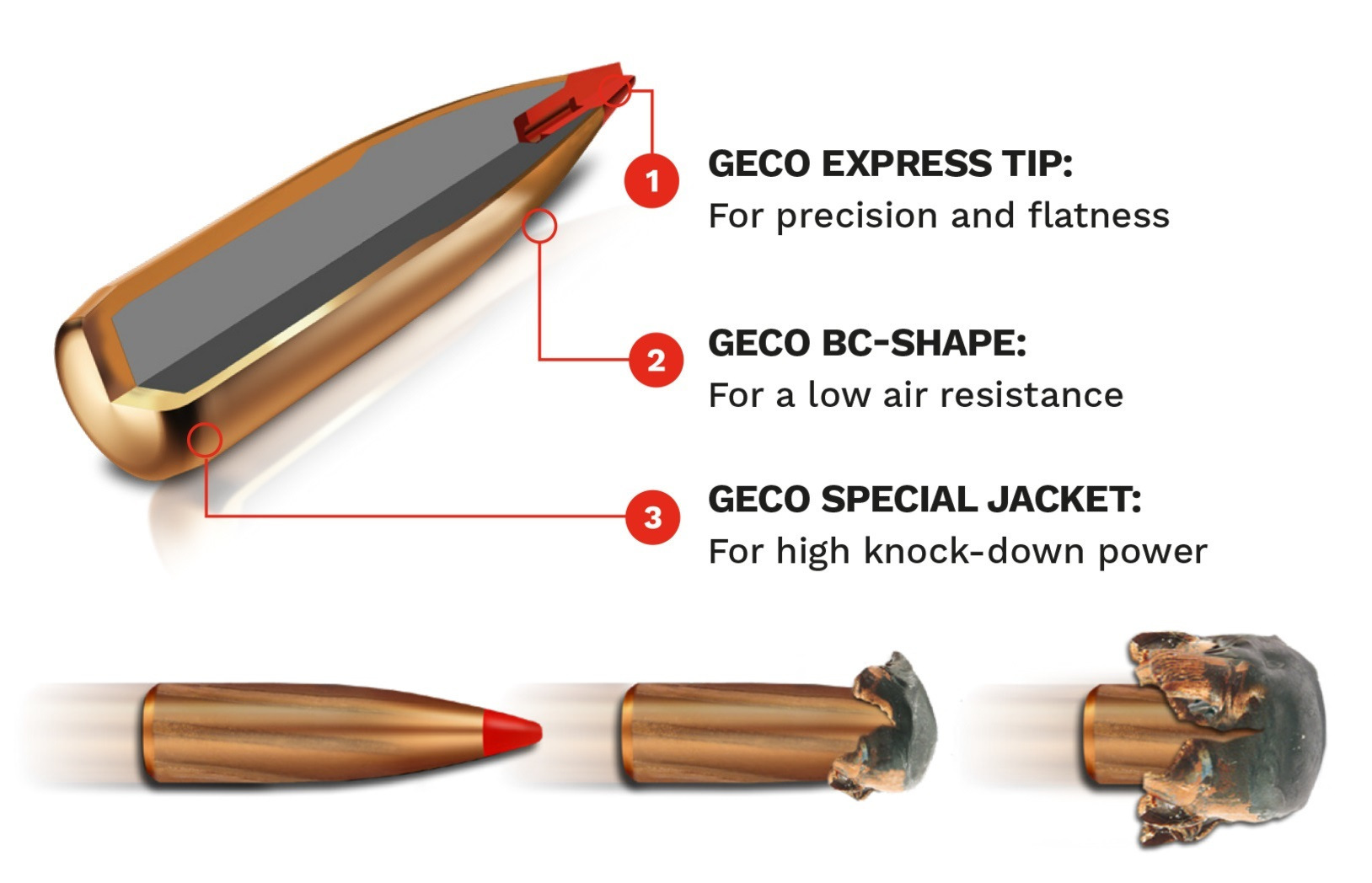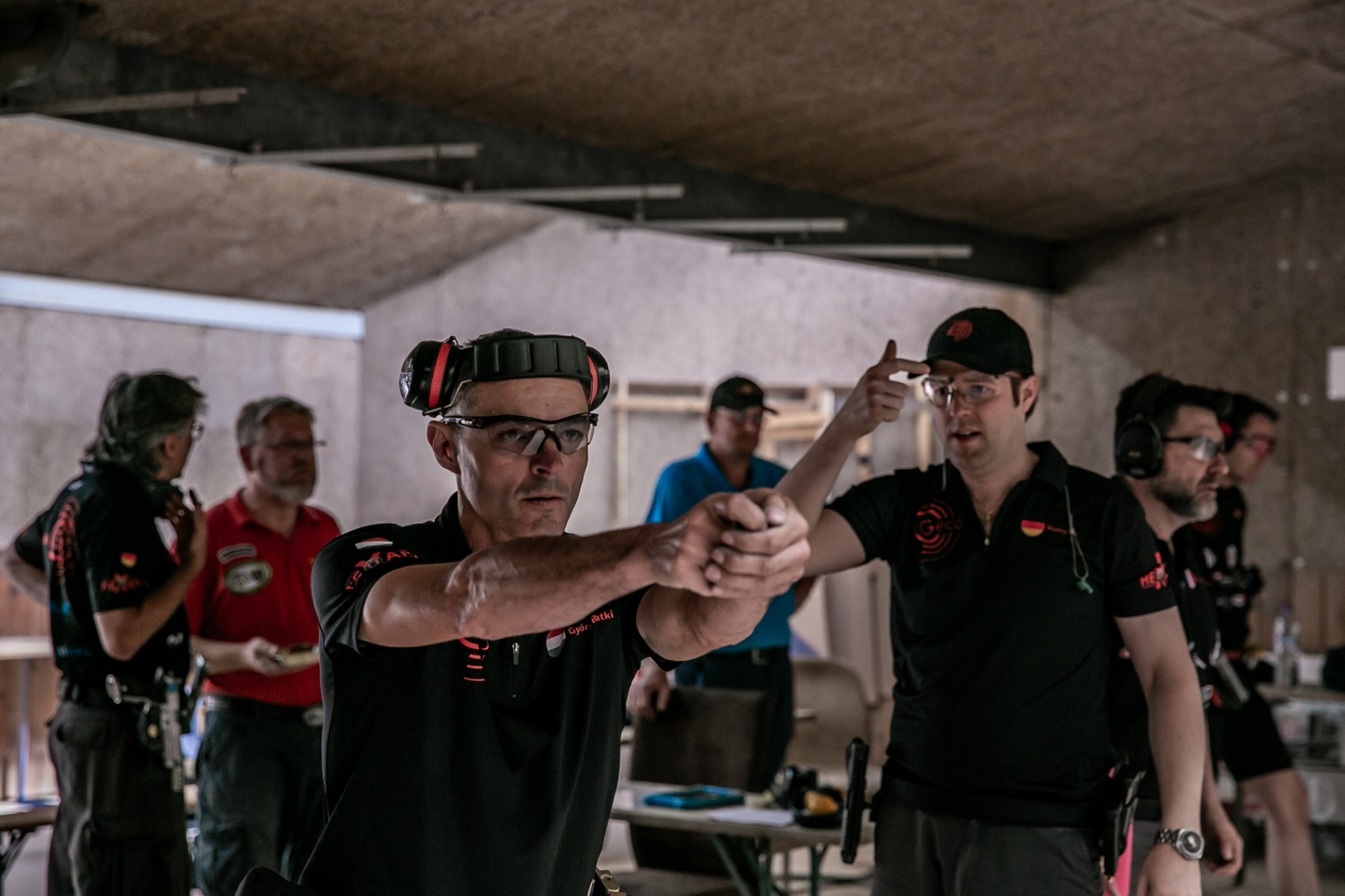Under the brand name GECO, since 2015 optics are also offered in addition to hunting and sports ammunition. In the meantime, two product lines of binoculars have been added to riflescopes. With the Standard series and the Gold Series, GECO serves both the entry-level segment for quality binoculars and the market for premium optics in the medium price range. The GECO RF is a completely new addition to the binoculars range, which is not only distinguished by its outstanding optics, but also by reliable and precise range measurement with rock-solid ballistics. With a list price of over 1000 euro for the 8.5x50 Gold, GECO still remains considerably below the prices that premium manufacturers such as Leica, Swarovski Optik or Zeiss charge for their binoculars – these are often twice as expensive.
At present, GECO's Gold series comprises five versions: the compact 8x42 and the 10x42 as well as the 50 mm lens models with 8.5, 10 and 12.5 magnifications.
The Standard series currently offers a choice of six binoculars in total: from the handy 8x32 to the massive 10x56. The two binoculars shown here, 8x56 Standard and 8.5x50 Gold, differ only slightly in appearance and dimensions, but do differ in weight: the 8x56 weighs 42.3 oz/1200 g, while the 8.5x50 of the Gold series weighs only 33.1 oz/940 g.
Comparing the GECO 8x56 and GECO Gold 8.5x50 binoculars
RUAG Ammotec (GECO's brand owner) cooperates with the German Precision Optics (GPO) company from Upper Bavaria in the field of optics for the design and technical conception. As is quite common in the upper segment, GPO's design for the GECO binoculars of both series also relies on magnesium for the housing. The alkaline earth metal has the advantage that it can be easily cast in complex, thin-walled molds and, due to its much lower density compared to aluminum, weighs much less when a component is similarly constructed. However, when it comes to purely mechanical criteria such as hardness or tensile strength, magnesium can't compete with Dural – for binoculars this is usually not a problem.
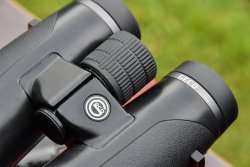
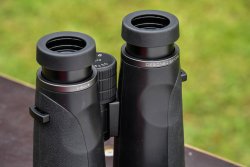
Only the eyecups of the GECO Gold series are made from aluminum, with a rubber coating protecting the lenses or the eye area. The eyecups can be rotated in two steps to adjust the distance between the eyepiece and eye or glasses. There are small differences in the diopter adjustment: on the 8x56 this is done by a dial below the right eyecup. Unlike the 8.5x50 Gold – there, the center focusing knob must first be pulled slightly out for adjustment. Theoretically, the Gold housing offers a so-called "micro bridge" as a special plus to make handling easier. In fact, the difference is there, but not huge: the bridge joint of the 8x56 measures 38 mm in height, the joint of the GECO Gold glass 34 mm.
Technical specs of the two tested GECO binoculars
| Model: | GECO Gold 8,5x50 | GECO 8x56 |
| Magnification: | 8.5x | 8x |
| Objective Lens Diameter: | 50 mm | 56 mm |
| Exit pupil: | 5.9 mm | 7 mm |
| Eye relief: | 19.5 mm | 20 mm |
| Twilight factor: | *20.8 | *21.2 |
| Field of view at 100 m: | 105 m | 129 m |
| Diopter compensation: | +/- 4 dpt | +/- 2.5 dpt |
| Pupil distance: | 56-76 mm | 57-75 mm |
| Near focus: | 3 m | 2.3 m |
| Light transmission: | 91 % | 92 % |
| Dimensions (LxWxH): | *175 x 57 x 137 mm | *192 x 65 x 155 mm |
| Weight: | 940 g | 1.200 g |
| Price (SRP - price may vary in your country): | 1199 euro | 699 euro |
Notes: The values marked with * are test values determined by us. All other values are manufacturer's specifications.
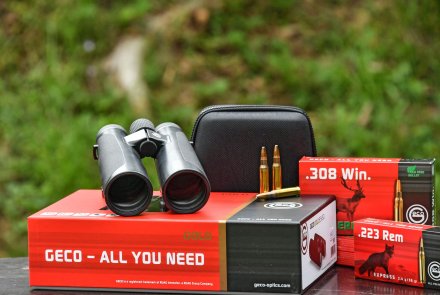
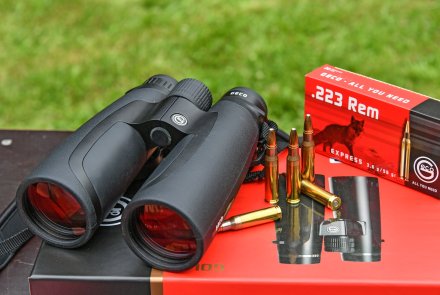
The GECO 8x56 and GECO Gold 8.5x50 observation optics in practical test
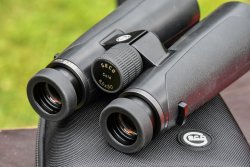
An overnight stay in a refrigerator showed that both the center focus knob and eye cups could be operated with gloves without much effort even at temperatures around -16 degrees Celsius. Regarding the inner values, the Gold series offers some extra features to optimize the image quality – such as a water-repellent coating. The edge sharpness and color fidelity of both test optics gave no reason for criticism. Details remained clearly visible even at the edge of the field of view. Although normally no one observes the events specifically with the edge of a field of view, blurriness even at the periphery of the field of view is irritating and thus impairs the overall impression. In daylight, the image of the GECO Gold 8.5x50 binoculars appeared somewhat more contrasty compared to the standard series, small details in the image could be better distinguished. During observation under the light of the June moon, the 8.5x50 Gold showed itself to be superior to the larger 8x56 from the Standard series in terms of image quality, even in very low light. Those who want to have even more performance here will have to dig a lot deeper into their pockets and invest in a comparable product of one of the above mentioned premium manufacturers.
Thus, there are no huge differences between the two optics in terms of housing and quality. The image quality of the GECO Gold 8,5x50 appears sharper than the GECO 8x56 and also superior at night. And that's what counts in the end. However, the Gold model also costs almost twice as much as the 8x56 of the basic series – recommended retail price for the GECO Gold 8x5x50 is 1199 euro, the GECO 8x56 costs only 699 euro. For many, however, the warranty might also influence the choice: GECO grants five years for the binoculars of the Standard series, ten years for the GECO Gold.
Further information on optics can be found directly on the GECO website.
With tested extensively the GECO Black 1-8x24i tactical riflescope on the shooting range here.



